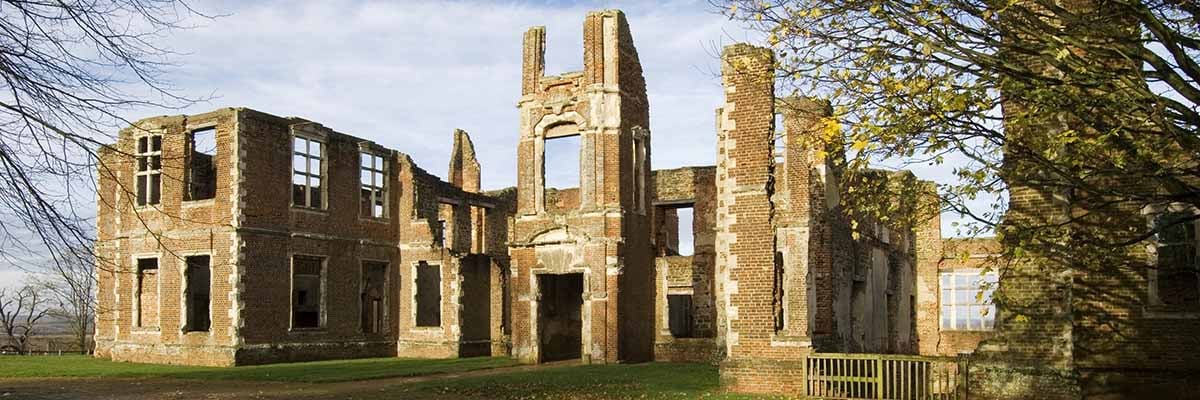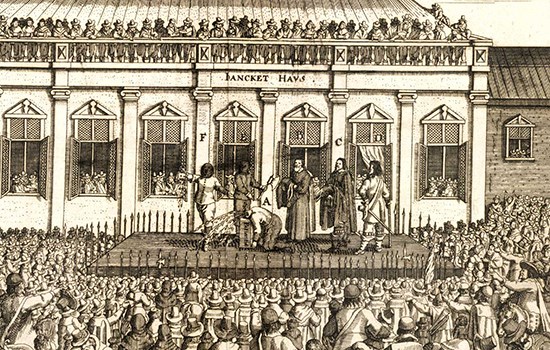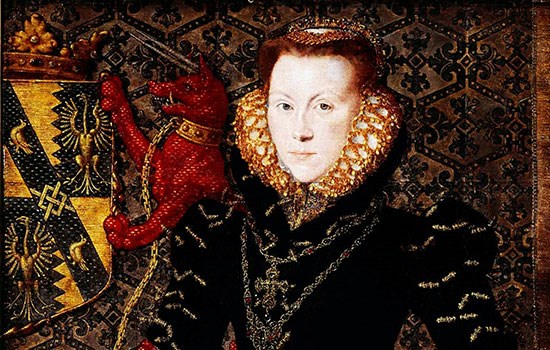History of Houghton House
Houghton House was built in the early 17th century by Mary Herbert, Countess of Pembroke, as an elaborate hunting lodge. An unusual mix of Jacobean and classical design, it retains two important early elements of classical architecture in the form of its two loggias, which have been attributed to Inigo Jones. The house may have been the inspiration for the ‘Palace Beautiful’ in the 17th-century Christian writer John Bunyan’s religious epic, The Pilgrim’s Progress. When it was dismantled in 1797, the ruins survived as a garden feature in the grounds of nearby Ampthill Park.

A Hunting Lodge
Mary Herbert, Dowager Countess of Pembroke, was a well-connected member of the royal court. She commissioned Houghton House in 1615 on land granted to her by James I (r.1603–25).
The building was very likely the work of two architects: John Thorpe, who represented the Jacobean tradition, and another, widely thought to have been Inigo Jones, who was responsible for introducing the classical style into England. The building was completed by 1621 when James I honoured Mary with a visit to Houghton.
A Family Home
Mary died later that year, and the estate was granted by James I to the Bruce family. Robert Bruce, Earl of Ailesbury, was a key figure in the restoration of Charles II in 1660.
Whereas previously Houghton had only been occupied during the summer months, the Bruces made it their main country seat, and occupied it throughout the year. The original staircases were in the corner turrets, but they inserted a grand staircase in the hal l to create a ceremonial route between the hall and the great chamber above. The staircase was made of elaborately carved wood; the decorative plasterwork, including niches at mezzanine level, is still visible.
When the house was dismantled in the late 18th century, the great stair was moved to the Swan Inn in Bedford, where it can still be seen.
The house is reputed to have been the model for the ‘Palace Beautiful’ in John Bunyan’s The Pilgrim’s Progress, published in 1678.
Later History
In 1738 the 4th Duke of Bedford bought Houghton. His son, the Marquis of Tavistock, lived there from 1764 until he died in a hunting accident in 1767.
The 5th Duke of Bedford rented the hunting park to a neighbour. Subsequently unable to let the house without the park, he ordered Houghton to be dismantled in 1794. The interior was completely gutted, leaving no hint of its former glory.
In the early 1770s the Earl of Upper Ossory commissioned Lancelot 'Capability' Brown to landscape nearby Ampthill Park. He included Houghton House as a feature in the design though it lay outside the boundaries of his estate. Later, in 1804 the Earl acquired the park and the ruins of Houghton House. Today the house still dominates the landscape, providing wonderful views over its former hunting park.
Further Reading
Collett-White, J, ‘Inventories of Bedfordshire Country Houses 1714–1830’, Historical Record Society, 74 (1995), 103–22
Curtis, E, ‘Life in the “Palace Beautiful”: Houghton House, near Ampthill’, Elstow Moot Hall Leaflet, No 5 (1958)
Foster, AJ, Bunyan’s Country: Studies in the Topography of Pilgrim’s Progress (London, 1891)
George, MSF, ‘The Mansion of the Fair – the story of Houghton House 1’, Bedfordshire Magazine, 1:5 (1948), 169–74
Hannay, MP, Philip’s Phoenix: Mary Sidney, Countess of Pembroke (Oxford, 1990)
Smith, E, ‘Houghton House, Bedfordshire, designed by Inigo Jones’, The Builder, 19 (1846)
FIND OUT MORE



